Those of us out West have been talking about the “big one” most of our lives—that behemoth of an earthquake that could hit at any time and put entire cities on life support.
But Bill has already seen it.
Back in March of 1964, in Homer Alaska, on a mountain thick with spruce, Bill watched as the biggest quake in North American history threw four-foot mounds of liquefied earth against his family's house.
“It was [like] watching a wave come to you that never broke,” he says. “If I had taken two or three steps further outside I would have been tossed around.”
Bill isn’t exaggerating. The earthquake he lived through was so massive it tossed rail cars around. It also swallowed up neighborhoods and deposited massive fishing boats into the middle of town.
Fortunately, Bill and his family walked away relatively unscathed. The story of how they did it should give us all hope that no matter how dire the emergency, with the right tools and know-how you can make it through safely.
Read on to hear Bill’s story in his own words.
THE POWER OF OLD-FASHIONED SELF RELIANCE
EE: So Bill, could you tell me a little bit about growing up in Homer, Alaska?
B: I’m probably one of the last territorial Alaskans you'll be able to talk to. I watched her turn from a territory to a state. A lot of the people [who] came down there referred to Homer as the end of the road, which in those days it more or less was.
You didn’t really think about what self-reliance was as much as you just did it. Most of what we did was typical of most any other homesteader. With the exception of the fact that our home was a little better developed than most. The house was built very stoutly, the foundations were very solid, and the house was very well situated.
We got everything pretty much that we needed. We had a good acre or two of potatoes that we grew as a family and farmed ourselves. And we had an outside garden on top of that which we developed.
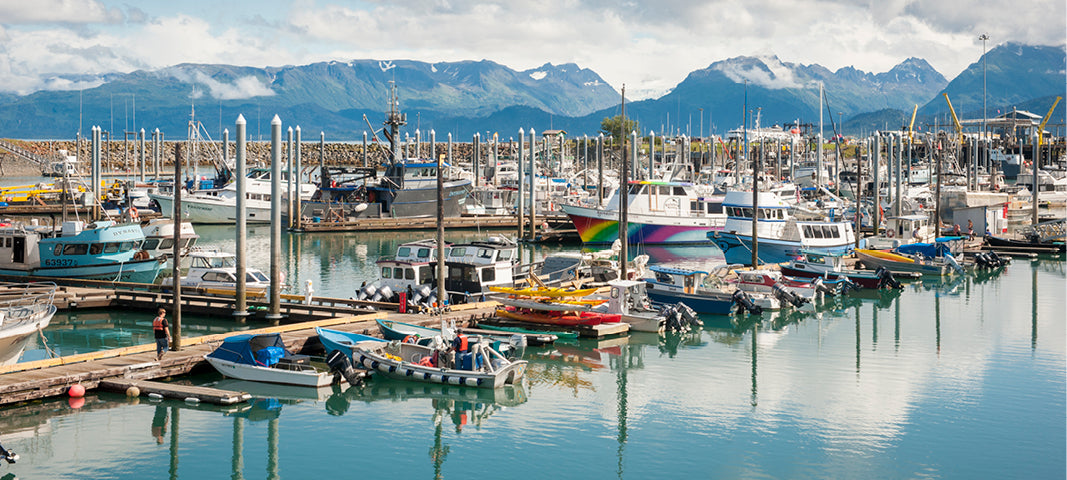
In Alaska [growing] is rather challenging—you have to think about your climate in the things that you do [so] most of what we grew were root crops and cold weather crops. [Besides potatoes] we grew turnips, rutabagas, and we had quite an ample berry supply.
As children that took care of making not only our preserves which supplied us through the winter, but we also took the surplus and sold it and put money on our ski equipment for the winter.
It was very family oriented.
The groups of us knew each other quite well, and people didn't show up on your doorstep for anything unless they really needed it. We understood that we took care of ourselves and our needs as best as we could and then you stepped up to plate when somebody else needed help.
HERE’S WHAT A 9.2 QUAKE LOOKS LIKE—FROM ONE OF THE FEW PEOPLE IN THE WORLD TO SEE ONE

EE: So can you tell me a little bit about that day? About the experience of watching this massive earthquake unfold before your eyes?
I was busting coal that day just doing my normal chores, early afternoon, and the light goes out. My thought was that my brothers were upstairs rough housing. My first thought was to step outside and yell up to the window to cut it out.
And I got about as far as the archway with those big concrete pillars on either side of me when the ground started to move. And I realized that it wasn't [my brothers], it was something else entirely.
I didn't know quite what to do. I remember not being afraid of it. That I do remember. I was more awestruck than anything else as I started watching the ground move around me.
And it literally liquefied.
It was rippling very much like a slow movement of shaking a blanket or watching a wave come to you that never broke. Now imagine those waves being in the neighborhood of about three feet [and] as it got further away from the house, closer to four feet or so.
If I had been outside the house, if I had taken two or three steps further outside as I planned on, then I would have been tossed around.
[There were] telephone poles off to my right. As each wave passed, first they would climb up one side and they would point off at about a 45 degrees and then they would stand up at the peak and then go down a 45-degree angle at the other side.

[The wires] twanged like a big guitar [with the poles] bowing toward each other like a couple of dancers [as they] almost touched the ground.
But the trees were what amazed me more than anything else. The trees themselves—the trunks were easily about two feet in diameter. And despite the thickness at the base, the top as they were being hit with those waves would snap completely in a U shape and the tips would point to the ground and then snap back up like a bullwhip and point in the opposite direction.
I was just an 11-year-old kid but these scenes freeze in my mind.
EE: How long do you remember the quake lasting?
B: It seemed like it lasted for quite a while. I was to learn later from the testimony of others who were able to time it that it lasted over a minute and a half, almost two minutes. Then there were the aftershocks.
[NOTE: The USGS reports that the earthquake lasted 4 ½ minutes ]
EE: Wow. Just so our listeners have a point of reference, the average earthquake lasts 20 to 30 seconds.
ENTIRE NEIGHBORHOODS DISAPPEARED INTO THE EARTH
B: Entire rail systems were torn up. Full sized locomotives were turned upside down in their tracks.
There were areas where you could stand on top of your car or your truck and reach up where the street had collapsed where whole sections of the street had just dropped. You could stand on top of a car or a truck and reach up and you still couldn't touch the asphalt pavement. You were in that deep of a hole.
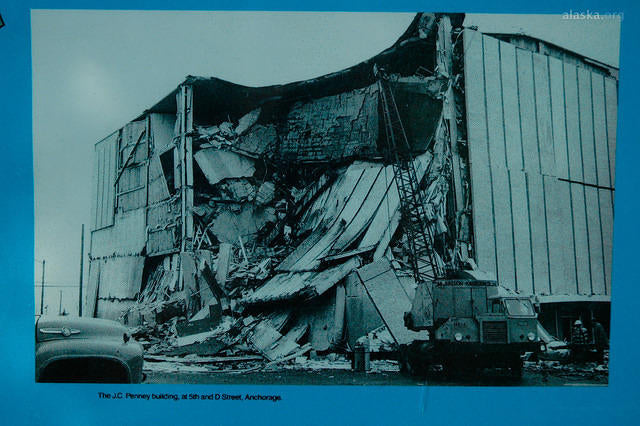
Up in Earthquake Park in Anchorage they had made the mistake of building on a clay foundation; it wasn't as solid as a rock foundation like most of our homes had been in. They just kept expanding the real estate. And that whole area turned to jello and the houses just collapsed and several of them disappeared into the earth.
But in our situation, we were built solid enough that the house itself was moving as a unit and I was moving with it.
EE: I did read that there were multiple tsunamis triggered across the entire region.
Yeah, there were entire villages that disappeared. Port Lions is a village that was reestablished [after it was] was cleaned out by the tidal wave and they had to relocate.
Kodiak was really hit hard. The tidal wave picked [80 to over 100-foot-long] vessels up and took them over the top and through the housing [and business] districts and deposited them right in the middle of town. The parking lot of one of the supermarkets there had fishing boats sitting in the middle of it.
A SOLID HOME IS SOMETIMES THE FIRST STEP TO DISASTER PREP
EE: Such an incredible thing to hear. It was such an extreme earthquake.
You know, I wonder even today if our communities are built to withstand something of this magnitude.
B: I have been concerned about the way buildings are constructed.
They say that they're earthquake proof, being a house. And their idea of earthquake proofing is a four to six-inch thick cement foundation, the walls in their basement. And particle board instead of even plywood walls. And then they staple metal stripping down. And this is supposed to hold the building on the foundation. And it's not much more than just sheet metal.
And I look at that and I say, you know something, I remember [our house that my dad’s best friend Bob built] down in Homer when this hit. The integrity in building those foundations… I was a kid down there helping him with the cement work on the floors of some of those buildings that withstood the quake.
The work that he did was so solid that one of his buildings that was in between a couple others [that had been built by other contractors] was standing and still able to be returned to use. The other buildings fell apart right next to it.
EE: It's amazing to know that it's very infrequent that our creations are tested to that limit, and that there were still some buildings standing—and that they had some of the things in common you talked about. That's something to keep in mind
LIVING—AND SERVING—IN THE AFTERMATH
EE: Do you have a clear recollection once the shaking stop. Just for you and your family in the immediate aftermath, what you guys did?
B: We got together as a family and made sure everybody was OK. I remember very few things being knocked over. But then we had very few loose chairs or things like that in the house.
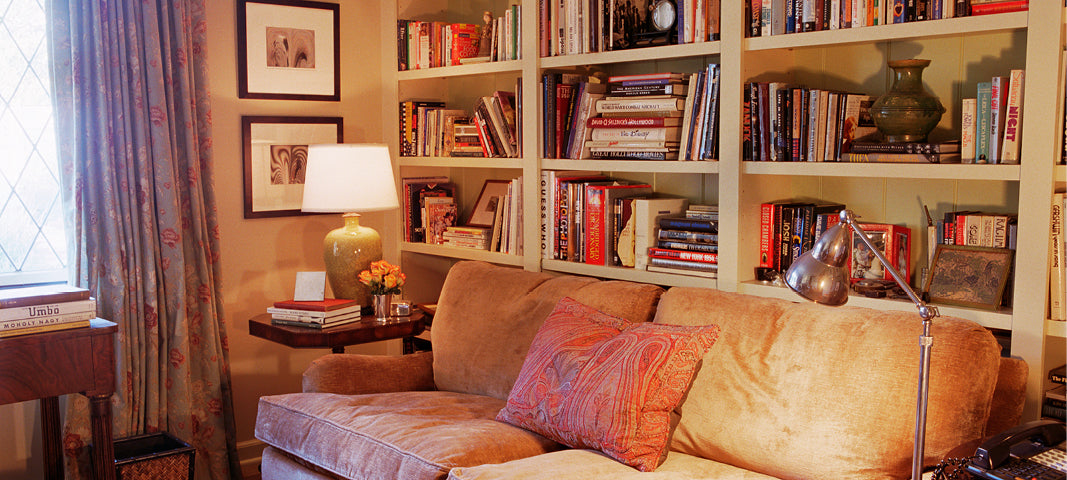
Most everything we had—just from the nature of the size of the house which was quite small—was built-in. Our bookshelves were built right into the wall.
And then for water, our well was actually built right into the center of the basement.
Our stove was propane, bottled gas. So it was secured to the side of the house. So we had a cook stove. And we also had the fireplace. We had ways of being able to cook our meals and stay warm.
We had lanterns, as far as lighting went. The town itself was for the most part pretty much self-reliant.
That was the mentality there, it's kind of hard to describe. It was a way of life. The self-reliance [needed to prepare] for hard winters in isolation was a way of life. We had to be ready for it. And so the fact that we had an earthquake hit changed the nature of it. But it didn't change the necessity. By and large, we didn't really have to go anywhere. - we had everything we needed right there.
EE: How did the rest of the community fare. Did your family find themselves in the position to help other folks?
B: A lot of the main people that we found ourselves helping were the people down closer to the water line.
Families were left homeless and so a lot of us on the mountainside, we just opened our homes up to them. They came up and people that I didn’t even know were sleeping in our living room and in our basement because that was the only shelter available.
We still had plenty [of food] left from taking care of ourselves through the winter. With what we had harvested [we were] able to see to the needs of those people.
PRINCIPLES FOR LIVING A READY LIFE—LESSONS FROM AN ARCTIC EXPEDITION

B: And you know [all the things that got us through the earthquake]—it’s not just like that's good for Alaska. It's more about making good use of what you have. I don't suggest that everybody disappears into the countryside and try to recreate something that they may not be ready to do.
Here a situation that kind of illustrates what I'm talking about.
In 1997 I had a summer where I was free and I decided I wanted to kayaq the Arctic. For me this wasn't some adventure I was on – I had served up there for three full years, knew the Arctic winter and summer, and having grown up living this way I was really going back up there more for the peace.
But conditions required that I had to go up two to three weeks earlier than I would have liked to. And as I expected, the weather turned on me.
I had a day there that started out bright and sunny. There was no hint that there was even going to be a problem. But halfway through, a lead in the ice that had started out being almost a mile wide started closing in on me as the weather conditions changed.
[Pretty soon] there was no way out in either direction. Visibility dropped, the cold set in, and in the increasing rough weather shifted the ice as a corkscrew. I found myself in a situation that I could not get out of.
I should have died that day. But everything I had to have to stay alive was either on my person or in my kayaq – not on it. I knew what I needed before I left. I made sure it was on-hand and I knew how to use it.
It's more than just preparation of what you have. It's having the knowledge to be able to wield [it]. That's where your expertise will keep you going.
I was able to navigate my way to a point where I finally found the iceberg [with] a little cavity just big enough for my kayaq to slide into.
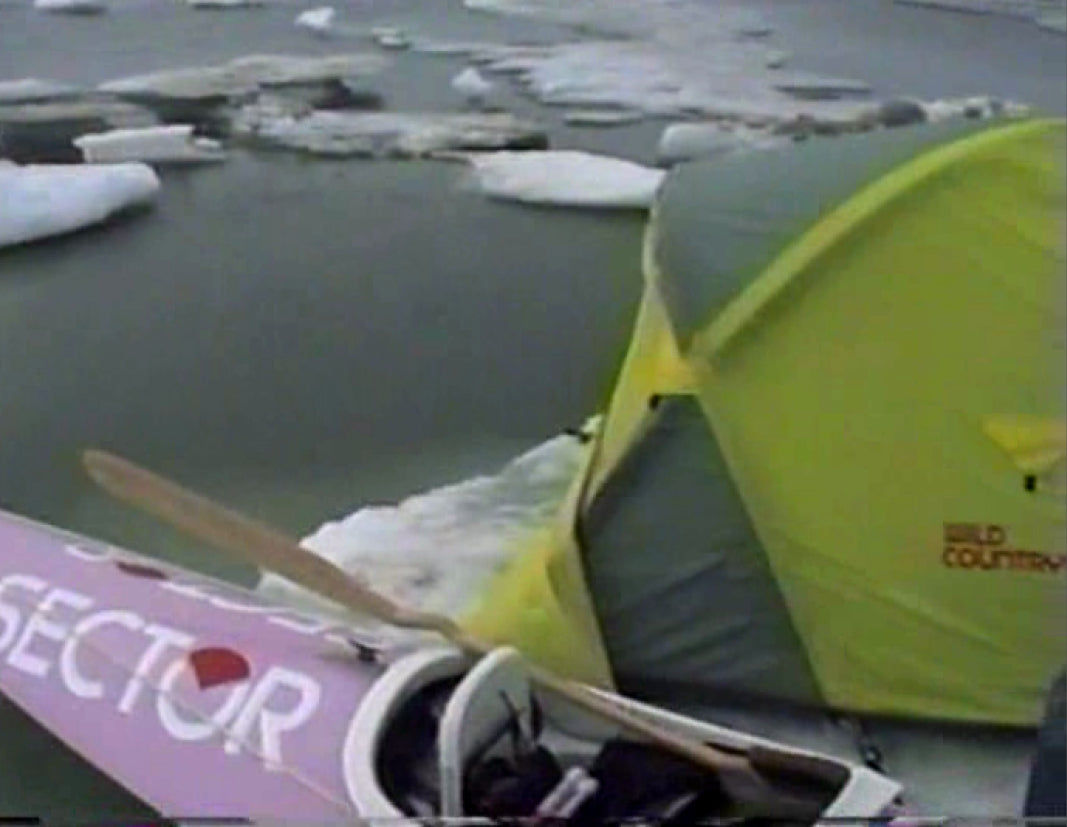
I made a full camp. I had mountaineering pegs [that I] screwed into the ice and was able to lash the boat off so it didn't go anywhere. The kayaq was designed for subsistence and so it was stable enough to work from.
I had an axe that I carried for working the ice—I chopped the rotten ice of around the edge so I made sure that I was on solid ice.
And then I laid down the insulation I needed inside and once I made sure everything was secure I was able to get the sleep that I needed.
But it was a prime example of not just of what you have on hand but having the knowledge of knowing when and how to use it. You can be the best equipped there is out there, but if you don’t know what you've got and you don't know under what circumstances to use it, it's useless to you.
I've learned through these experiences that if it isn't on you or readily available to you when the emergency hits, it's not emergency equipment. It's useless.
EE: You know, few of us are ever going to see the kinds of conditions you're talking about or live on a property that will allow us to do some of the things that you were able to do. But these are lessons that we can use regardless of where we are.
I have no tactile experience with some of the things [in my supply]. And these aren't things I'm hauling around the Arctic. These are things I'm hauling around the garage, basement, and closet.

B: A good example of [the importance of learning to use your supplies] is when I was up in the ice [with a] reverse osmosis desalinator.
You don't just take it out of the package and drop the receiving unit down in the water with the inlet and start pumping till it gives you fresh water.
There's little tricks, like for example tying a handkerchief around the end of it so it catches the sediment and doesn’t got in your screen and clog up your reverse osmosis device. Then clean and dry out the handkerchief when you're done.
[And beyond that], no matter where you live and no matter what you're doing you need to think about the particular circumstances you may be facing. If you're in the middle of the desert in California you're going to be dealing with a lot of different problems than what I would.
EE: One of the things that strikes me is that you’re always becoming [a prepared] person.

It's just a mentality where you're constantly learning. You've told me—in this and other conversations—about the way you kept your engine running in your car during the eruption of Mount Saint Helens and how you learned [those tricks while you were] working coal.
And then things you'd learned in the desert, and now a little later in life moving into a new environment you've learned from some of your neighbors about gardening.
To me, one of the keys to your preparedness is just that you never stop preparing. It's part of who you are, it's in you, and you're always learning more.
B: It's a learning process—learning to work with what you have where you're at, and it's going to be different in different circumstances.
EE: You know Bill, if you can continue to learn at 68 [years old] how to be better prepared, none of us have an excuse. Becoming a prepared person is maybe not a destination. It's just something you're always doing.
Thank you so much for sharing what in my opinion is a more than just a preparedness story, but a very unique human experience.
B: Not a problem, Cameron.

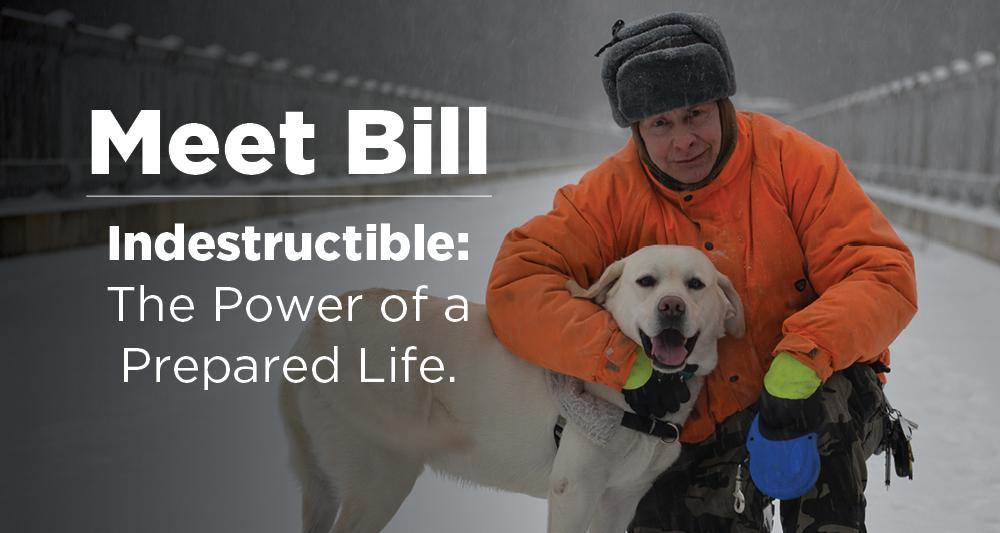

4 comments
JONATHAN NETTELFIELD
I was the person at Sector (you can see the logo on the kayak photo) who was responsible for identifying him as a potential person to sponsor and then overseeing his expedition. We saw him off at Deadhorse on Prudhoe Bay and then met him a year later at Tuktoyaktuk on his way east. We were, at the time, the leading sponsor of extreme expeditions around the world and Bill had to meet a high bar, which he did, almost with his eyes closed. One could tell he was the real thing and not one of the more normal over-adrenalized adventurers that sought our sponsorship dollars. I should add that we have remained very good friends and he has one of my dogs and I one of his Jeeps!
Cindy
“Kodiak was really hit hard. The tidal wave picked [80 to over 100-foot-long] vessels up and took them over the top and through the housing [and business] districts and deposited them right in the middle of town. The parking lot of one of the supermarkets there had fishing boats sitting in the middle of it.” This was true. My grandpa built a boat named Cindy that was in the middle of mainstreet on Kodiak Island. If anyone has a good picture of the boat Cindy please reply back to this post.
Debra Bain
This is a wonderful story to learn from and get ideas. I too believe it is the mindset of constantly being prepared that makes a difference. Having canning supplies is of no value unless we know how to can and also how to grow the items we need to can.
Robert H Rowley
A great story for everyone to read. You are only half prepared having the bare essentials of food, water, clothing and fuel for electricity. You need to eat the food you store have the proper clothing for the season. Make sure you have plenty of fuel for your generator and know how to work on your equipment ( spare parts) Being prepared is a never ending task. It takes TIME, Money and alot of Preparedness . Look at our world today. No food Storage or Savings. People are going hungry and losing their homes.